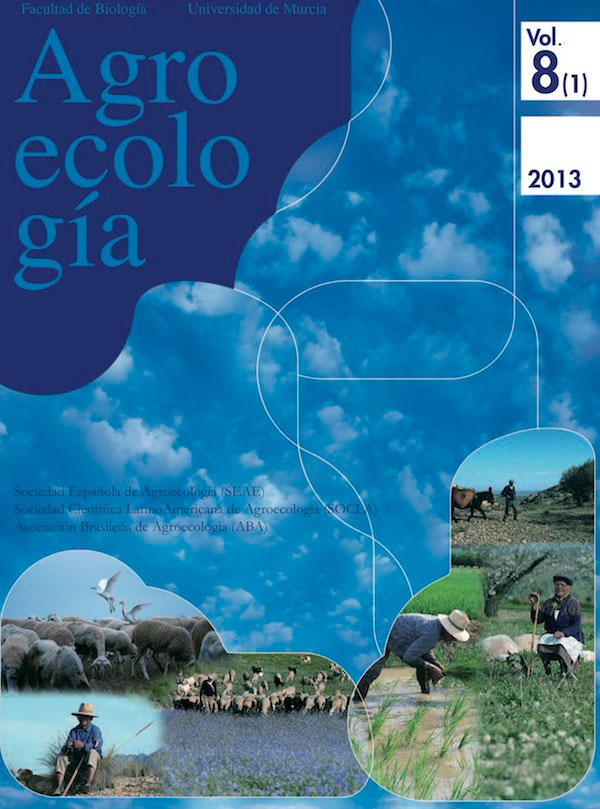Diagnosis of the complexity of the designs and management of the biodiversity in agricultures production systems in transition to the sustainability and the resilience
Abstract
Biodiversity is considered essential in the process of agroecological conversion of agricultural production systems and in enhancing resilience to climatic change. As a result of several years of research, we offer a new proposal for the diagnosis of the complexity of the designs and management of the biodiversity elements in agroecosystems. 64 indicators have been generated that can be grouped in the following 6 categories: 18 indicators on design and management of the elements of productive biodiversity (DMBPr), 7 indicators on soil management and conservation (MCS), 5 on water management and conservation (MCA), 5 on management of the plant protec- tion interventions in productive systems (MISRPr), 15 on design and management of the elements of the auxiliary biodiversity (DMBAu) and 14 on the state of the elements of the associate biodiversity (EBAs).The measurement of these indicators allows one to determine the Coefficient of Biodiversity Management (CMB), to classify the production system regarding its level of complexity and thus elaborate an agroecological conversion plan. Herein we present the results of the application of this methodology on two neighboring farms:“La Provechosa”which obtained a CMB of 2,35, classified as “fairly complex” given its designs and management of biodiversity;“ La Trocha” with a CMB of 1,3 obtained and thus classified as:“Simplified”, therefore requiring a diversification plan to transition from conventional to agroecological management.Downloads
Las obras que se publican en esta revista están sujetas a los siguientes términos:
1. El Servicio de Publicaciones de la Universidad de Murcia (la editorial) conserva los derechos patrimoniales (copyright) de las obras publicadas, y favorece y permite la reutilización de las mismas bajo la licencia de uso indicada en el punto 2.
2. Las obras se publican en la edición electrónica de la revista bajo una licencia Creative Commons Reconocimiento-NoComercial-SinObraDerivada 3.0 España (texto legal). Se pueden copiar, usar, difundir, transmitir y exponer públicamente, siempre que: i) se cite la autoría y la fuente original de su publicación (revista, editorial y URL de la obra); ii) no se usen para fines comerciales; iii) se mencione la existencia y especificaciones de esta licencia de uso.
3. Condiciones de auto-archivo. Se permite y se anima a los autores a difundir electrónicamente las versiones pre-print (versión antes de ser evaluada) y/o post-print (versión evaluada y aceptada para su publicación) de sus obras antes de su publicación, ya que favorece su circulación y difusión más temprana y con ello un posible aumento en su citación y alcance entre la comunidad académica. Color RoMEO: verde.





